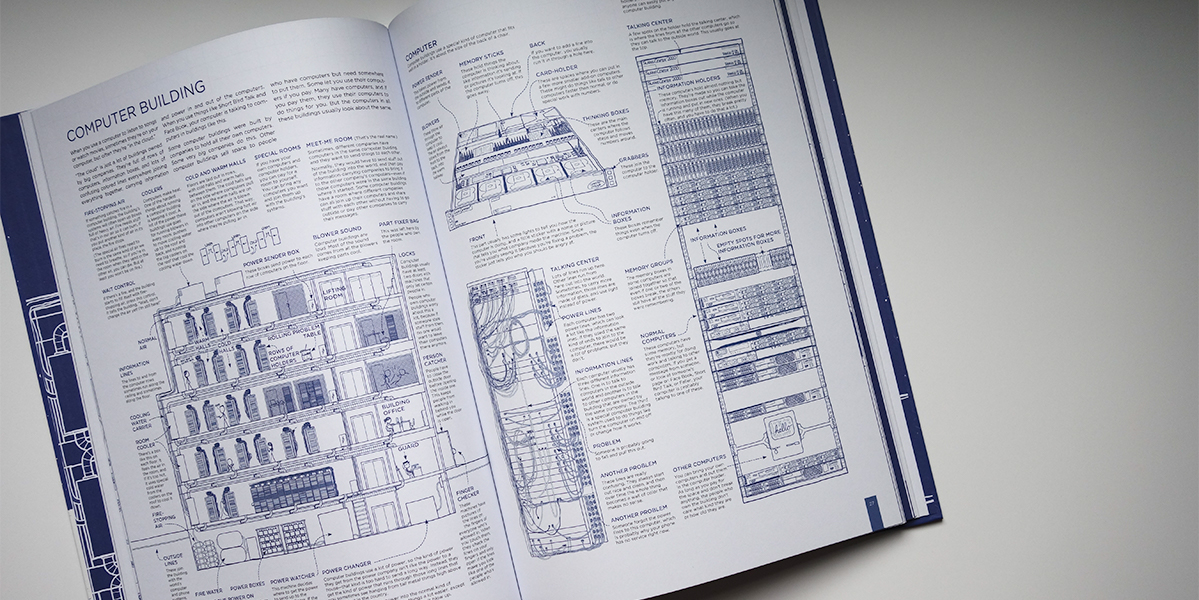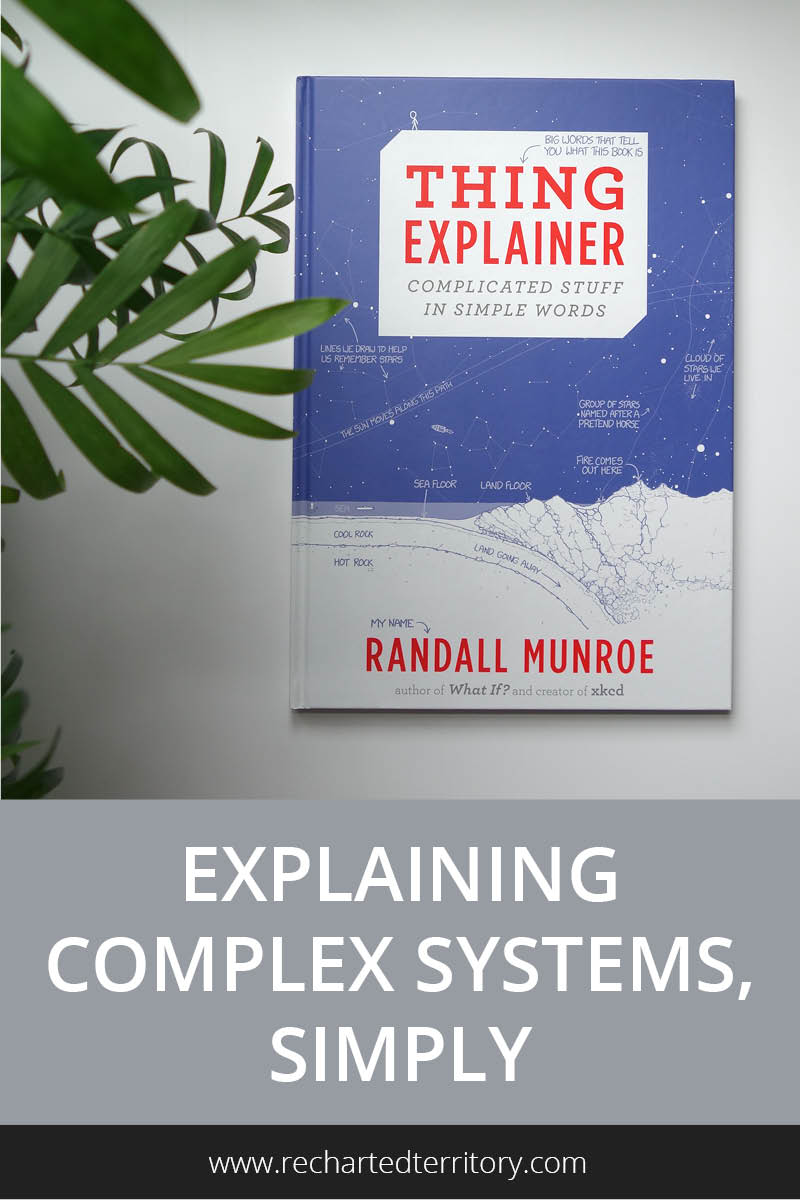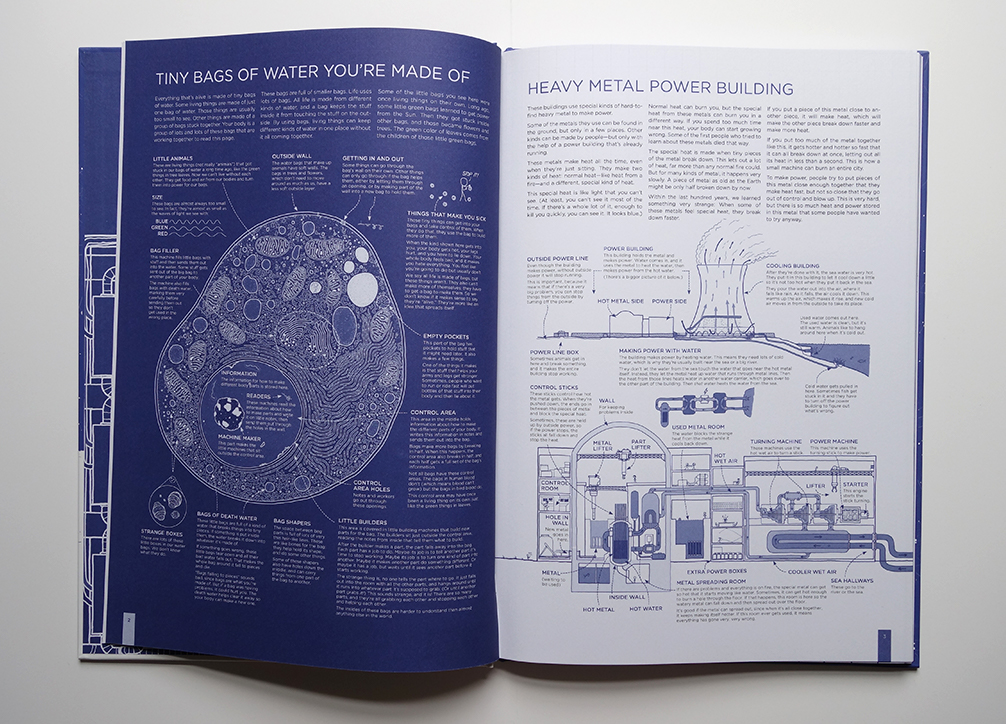

It’s been super hot in DC recently so I think it’s time for a light summer reading break. July’s reading list pick was a deviation from the norm. Some may call it a picture book for nerds. “Thing Explainer: Complicated Stuff in Simple Words” was created by Randall Munroe, the man behind xkcd.com and the book “What If? Seriously Scientific Answers to Absurd Hypothetical Questions.” If you’re a fan of learning about how things work but don’t want to exert too much brainpower then you might like this one.
Let’s dive into some tips inspired by the book.
Tip #1: Use common words
In the introduction, Munroe explains that he only used 1,000 (or, to be more accurate, he said “ten hundred”) of the most commonly used words in his explanations. He gives a handy list of those words at the back of the book, along with a URL to this free tool on his website. When you type or paste your content into the box it highlights the words that you’re using that he would consider “less simple.”
The Hemingway app is also a good tool to see how difficult your writing is to read. It gives you tips on how to simplify your writing à la Hemingway and you can watch the readability score dynamically change as you make improvements. Not saying you need to go to the extreme of “Thing Explainer” but swapping out some of your more complex words and phrases won’t hurt.
Tip #2: Describe what things do
If you’re stuck on how to describe something more simply, try describing what it does. Think about it like a different version of the game Taboo, but in this case, you can only use common words.
Some examples from the book: “Picture taker” = camera; “Shape checker” = padlock
Tip #3: Relate the functions to everyday concepts
In the book, you’ll see a lot of references to everyday items, even when he’s describing complex technology. Most people understand metaphors related to home, transportation, food, animals, weather, and nature. Be aware of cultural differences, but in general, you’ll be safe sticking to words and concepts that most people encounter every day.
Examples from the book: “Shared space house” = international space station; “small food hallway”= small intestine
Tip #4: Give people a map (ie. draw pictures with annotations)
What’s interesting about the book is that the pictures aren’t simple. Munroe uses an entire page (sometimes multi-page spreads) to draw out objects, locations, details, and scenarios. What’s simple is the text in the titles and annotations. The color palette is also monochromatic, using different shades of navy blue to differentiate objects and layers, like a map or blueprint.
Pictures can be great for communicating complexity without adding words that require a glossary. Humans are wired to interpret complex visuals and can make a lot of conclusions on their own without you needing to explain them. Visuals also let people explore the concept at their own pace, spending more time on areas that are more confusing for them, and skipping over others.

Tip #5: Give people the complexity they need in that moment
Munroe was a former NASA roboticist. And there’s a reason that this book looks different than a typical aero/astro textbook. It’s geared towards the masses, normal people or even nerds who are looking for a quick explanation of the concepts but don’t need to know enough to design a “space boat” ourselves. In your work, consider the core information that your audience needs in that moment. Most likely it will be information to help them make a decision, or maybe just satisfy their curiosity. Sometimes that info looks more “common” and other times it will be laden with jargon. Try simplifying all of the less critical information to free up brainpower for the big decisions. Or create a very simple overview, and add layers of more detailed information for people to explore if they’re interested.
Tip #6: Stop worrying so much
In the intro to the book, Randall talks about how the book came to be and how it almost didn’t.
“I’ve spent a lot of my life worried that people will think I don’t know enough. Sometimes, that worry has made me use big words when I don’t need to… I was really just worried that if I used the small words, someone might think I didn’t know the big ones.”
– Randall Munroe
Writing the book was a way for him to push through his worry and think about other fun ways to explain the concepts.
If you’re prepping for a big presentation, you might be worried about your simplicity/jargon ratio. Tip #5 was about adapting your message to what the audience needs. Tip #6 is about confronting your own ego.
If your audience prefers jargon, go crazy. But most likely, people will assume that you know big words and will be secretly happy that you didn’t use them. If you’re worried about looking “hardcore,” throw in a citation from a big-name publication or briefly mention your credentials. A clear presentation with subtle name-dropping is good, but over-the-top jargon or references might cause you to miss an opportunity to connect. Would you rather people be impressed in the short term but forget what you said? Or be the presentation they remembered?
Tip #7: Respect other “languages” and use simplicity to translate
When people think of “jargon” they might think of techy jargon. But don’t be fooled because business people and designers also have their own special vocabulary of words that frankly, engineers don’t always understand. I’ve worked with people from a variety of different fields and you might be surprised how similar the core concepts are between disciplines, even if the words and the rationale behind them are different.
Munroe talks about the importance of knowing and understanding those field-specific terms,
“To really learn about things, you need help from other people, and if you want to understand those people, you need to know what they mean by the words they use. You also need to know what things are called so you can ask questions about them.”
– Randall Munroe
Specialized words can hold more meaning than simple ones do. However, simple words are a great starting point for understanding what things do, before learning more about what everything is called. They can also be the neutral territory between disciplines. Finding common ground helps the other person map what you’re saying to something they definitely know, so they can translate it back to their “language.” It’s like those travel guidebooks where you point at pictures to communicate.
I hope these tips were helpful. Try a mini challenge this week and take something small (like an email) and try to radically simplify it. Only add back in more complex words when the simple ones aren’t clear enough.
Have you seen any great examples of a complex concept communicated simply? Or, on the flip side, really simple concepts with complex explanations?